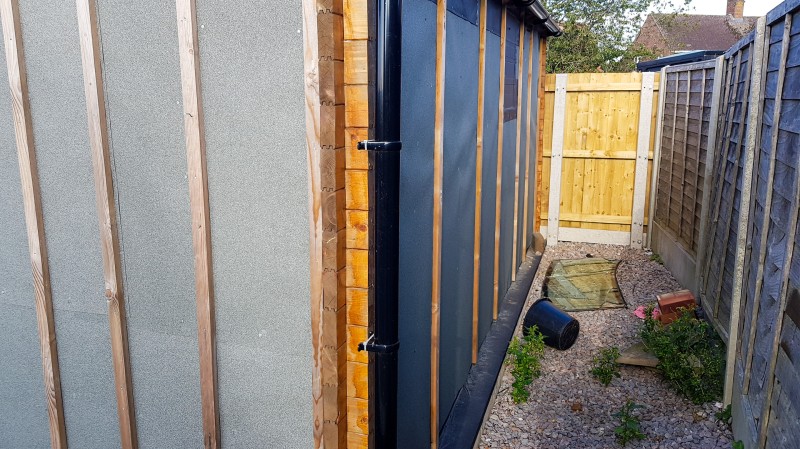You are here: Planning success: a beginners’ guide
From hiring professionals to submitting a successful application, we cover the basics
The summer may be over but across the country it’s the time of year when many homeowners start sketching plans for their dream home. But before you start swinging a sledgehammer and knocking down walls, it’s essential to have a basic understanding of planning rules. In our beginners’ guide, we take you through the steps to follow to get the green light from your local council at the first attempt.

What schemes need planning permission?
Chances are if you’re extending your home and it’s doesn’t qualify as permitted development (see below), you’ll need planning permission. This is the formal consent granted by local authorities for specific projects. Under Section 55 of the Town and Country Planning Act 1990, planning permission is needed for development, including:
- Building works – for example, construction, structural alterations, rebuilding and demolition
- Change of use of land or buildings
- Engineering operations – for example digging groundworks for a swimming pool
- Subdivision of a building for use as two or more separate homes.
Typically, one planning application covers everything. For example, if you’re converting an old barn into a home, it might involve change of use from agricultural to residential, building works and engineering for digging out the foundations.
Don’t be tempted to try to sneak things through. Councils can come down hard on those who breach planning rules. You may have to demolish what you’ve built and pay the costs.
Local policies
Each local planning authority sets out what is allowed for home extensions and new developments in their area. Under the planning section on your council’s website, look for the local plan and any relevant neighbourhood plan. The local plan will follow the National Planning Policy Framework (NPFF). Neighbourhood strategies are drawn up by parish or town councils. These documents establish local policies that need to be followed if your application is going to win approval.
Some councils also have a supplementary planning document with detailed guidance on homeowners for extensions. It’s always advisable to ring your local planning authority to check which documents apply to your specific project.
Seeking professional advice
Do you need professional help? That’s the first question to ask. Not because it’s rocket science to apply for planning permission, but because not hiring expert help could end up costing you both time and money. Most applications require the submission of detailed drawings and plans that reflect your vision while adhering to local regulations, so it’s better to employ a skilled professional.
Choose a local architect or, if your project is straightforward, a draughtsperson to draw up plans and elevations. An architect or a planning specialist can help you get planning permission when you might otherwise struggle, for example, if you live in a listed building or a conservation area. Meanwhile a structural engineer will ensure you don’t damage your existing building and the new extension is structurally strong enough.
You may also need to hire a party wall surveyor if your building work affects a shared wall or is within six metres of a neighbour’s foundation.
Permitted development rights
If your project can be designed to fall within permitted development (PD) rights, no planning application should be required. Essentially the government has given blanket consent to projects that fall under the PD umbrella. The aim is to fast-track schemes, such as simple loft conversions or small rear extensions.
Check the government’s Planning Portal website before you start your project. The criteria to qualify for PD are complex. For instance, a single-storey extension must not extend by more than three metres beyond the rear of a terrace or semi or by four metres if it’s a detached house. There are also rules on the maximum height and materials used. The new extension must be sympathetic to the existing house. Cladding, for example, must be similar to that already visible from the outside of your home.
For peace of mind apply for a lawful development certificate. This shows your local planning authority agrees your project is covered by PD. If you want to do something different or more ambitious, you will need to submit a planning application.
Be aware you don’t have standard permitted development rights if you live in a conservation area, listed building, flat or an of outstanding natural beauty (AONB). In these cases, planning permission will be required. Building under permitted development does not remove the requirement for other permissions, such as building regulations and the Party Wall Act.
Pre-app Guidance
Before submitting your application, most councils encourage you to seek pre-application advice. There is a fee for this service and the cost varies but it’s usually worth it. The local authority will advise you (or your architect) whether your proposal is likely to be approved or not and recommend any changes to improve its chances of success.
Taking this step can also identify whether specialist reports or surveys are needed to support your application. For example, a bat survey may be required if there is a “reasonable likelihood” of bat roosts being present and impacted by your proposal. Planners may want an arboricultural report if any trees will be affected, or they may want a flood risk assessment. This means extra expense, so it’s always a good idea to get pre-app advice before deciding whether to submit a planning application or not.
Submitting your application
It’s best to apply online via the Planning Portal. This will help you submit the correct documents and plans which means your application is more likely to be accepted and validated. After your application is submitted to your local planning authority, it goes through a checking process. Leaving off a scale bar or a north point can result in rejection, for example. Any missing information will be requested before processing can start. The fees are £462 for a new house and £206 for extensions or major changes to an existing dwelling – prices correct October 2023.
You also need to be aware of the Community Infrastructure Levy (CIL) on new development, which can be a minefield. This is a charge an increasing number of local authorities are imposing but some extenders and developers can claim an exemption. The sums involved can be large. It’s essential that you submit the relevant forms at the right time to claim exemption, so always check with your professional that they’re managing this part of the process, or do it yourself.
Managing the process
After the application is validated, there is a three-week period of public consultation. The case officer will inform neighbours likely to be affected by your project. It’s usually a good idea to have an informal chat with your neighbours and show them the plans before submitting a planning application to help win them over. If there is a parish council, they will be informed along with the relevant specialists at either your city/district or county council, for instance the tree officer and the highways authority. Your application will also be posted on the council website for public comment.
The planning officer may visit the site and write a report with a recommendation to approve or refuse your application. In principle, the application should be determined within eight weeks. In practice, it may take longer and the council may request an extension. Try to stay in touch with your planning officer while the application is being considered though it can be difficult go get hold of them.
How are decisions made?
Under planning law, officers must weigh up local policies, consultation responses and other “material considerations” specific to the site. Greater Cambridgeshire Planning Authority explains on its website what material considerations include:
- Layout – is the building and space in the right place on the site?
- Scale and massing – Does the scheme relate appropriately to the buildings and spaces around it? Will it cause unreasonable overshadowing or loss of daylight or sunlight?
- Design – whether the scheme is appropriate for its context and will enhance the local area?
- Listed building and conservation areas – is the project appropriate with regard to heritage, including listed buildings, scheduled ancient monuments and other heritage assets nearby?
- Green space and biodiversity – does the proposal enhance biodiversity, are trees and hedges affected? Have you considered local wildlife and protected species, such as bats, badgers, owls, great crested newts and birds?
- Are public rights of way going to be affected?
- Surface water, foul water drainage and flooding issues.
Common reasons for refusing applications include overshadowing and loss of light, impact on trees and restricting road access.
Perhaps surprisingly, the loss of a private view from a property or loss of value to a home are not material planning considerations as defined by national regulations and case law. This means officers can’t take them into account when deciding planning applications.
Most applications are decided by planning officers. But for some controversial schemes the final decision is made by the planning committee, a group of elected councillors who will debate and vote on the proposal. Planning committee meetings are public. This means you or your professional can speak to the committee, though time slots are usually limited to a few minutes.
Understanding the decision
Planning permission is typically granted subject to condition, such as when building work is allowed, choice of materials and landscaping features. Once granted, planning consent lasts for up to three years. It’s important to get any pre-commencement conditions sorted and spades on site within this timeframe or you will have to start the process all over again.
If your application is rejected, reasons will be given. You can amend the scheme and resubmit. Additionally, you have the right to appeal against a refusal, with a planning inspector then making the final decision. It’s always worth taking professional advice before going down the appeal route as it’s a long and expensive process.
If you are looking to make some home improvements, you may find some of these services useful
Building Regulations
Find details of local experts who can help with Building Regulations
Builders
Find local help with a building project
Architectural Design Services
Find local Architectural Design experts
Structural Inspections
Find an expert to carry out a structural inspection
Building Surveys
I want a local surveyor to do a Building Survey for me
Choose which Architectural service you require
If you are not sure which service you require, check out the options available...


